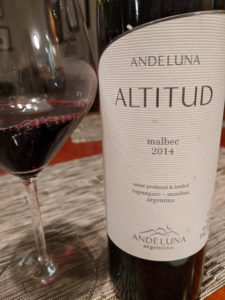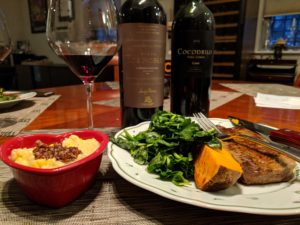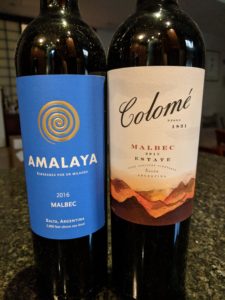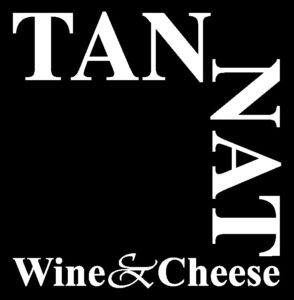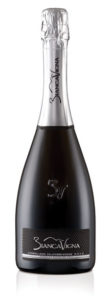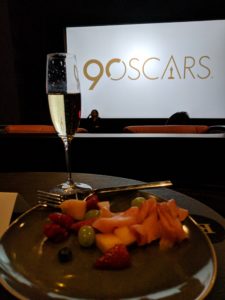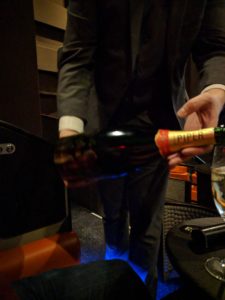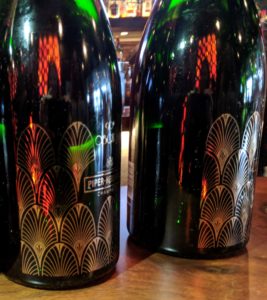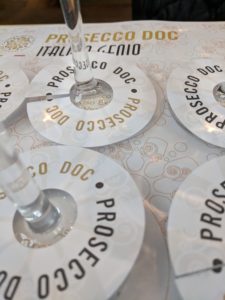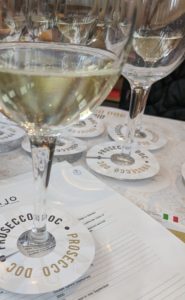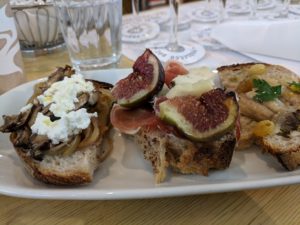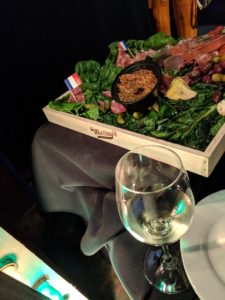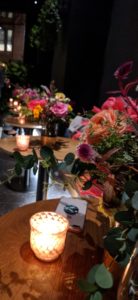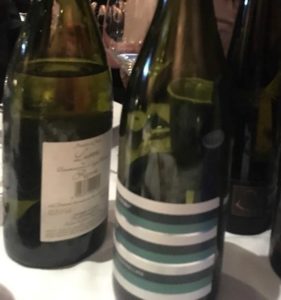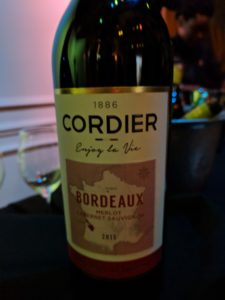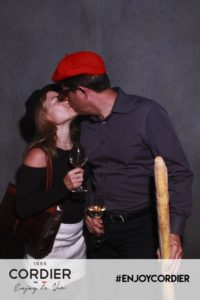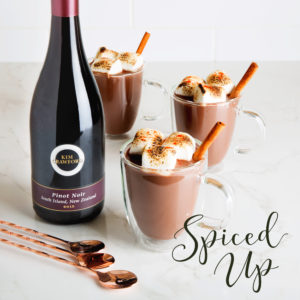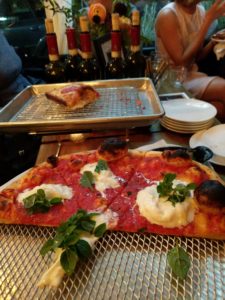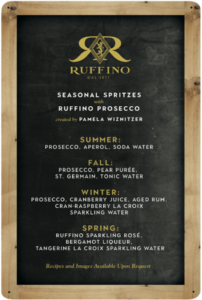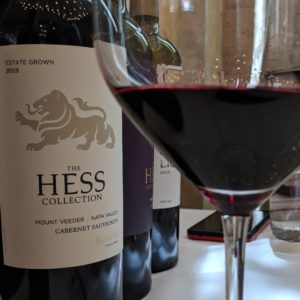 The traditional gift for a 40th anniversary is ruby, so it is especially fitting that the Hess Collection, first established in 1978, should celebrate with several new “ruby red” releases. While many know the wine label for its entry-level Hess Select wines, the company’s more prestigious Hess Collection consists of Napa Valley and sub-Napa Valley appellations, all of which are produced from estate grown fruit and are more complex, site-specific expressions of the Napa Valley terroir.
The traditional gift for a 40th anniversary is ruby, so it is especially fitting that the Hess Collection, first established in 1978, should celebrate with several new “ruby red” releases. While many know the wine label for its entry-level Hess Select wines, the company’s more prestigious Hess Collection consists of Napa Valley and sub-Napa Valley appellations, all of which are produced from estate grown fruit and are more complex, site-specific expressions of the Napa Valley terroir.
Founder Donald Hess, who literally turned water into wine when he sold off his bottled water business to buy acreage in the Napa Valley in 1978, has now retired. In 2011, Hess ceded his legacy to the next generation – his daughter Sabrina and son-in-law, Tim Persson – while winemaking operations continue to be overseen by Senior Vice President for Winemaking and Viticulture, Dave Guffy, who has been with Hess since 1999.
Situated on Mount Veeder, next door to the Christian Brothers, Hess winery is one of the largest landowners in the Valley, with 700 planted acres. And, they are constantly on the look out for more. Nicole Carter, Hess Family Wine Estates Director of Winemaking and Chief Marketing Officer, relayed a story about the recent pursuit for a 10-acre Cabernet Sauvignon vineyard in Rutherford on which they were significantly outbid over their $7 million offer. At an average price of $1million per planted acre in the valley, Carter adds, “You have to have the stomach for writing big checks.”
Having been born and raised in Switzerland, Hess, the 4th generation of a brewing family, has always had a more European palate for wines and consequently, the Hess house style tends toward a less oak is more mentality, which is noticeably reflected in the wines.
Another influence from Hess’ early life is his passion for collecting art. Hess grew up in a household with white walls, devoid of any decoration, but was introduced to the artworld by a friend and bought his first painting, a Picasso (why start small?), in 1996, igniting a life-long passion for contemporary art. In addition to limiting his purchases to those pieces he loves, his criteria also require that he only collects art from those artists with whom he has a relationship and, interestingly, will not permit the artist to restore any pieces, preferring to rely on conservators who will not make any changes. Twenty-five percent of his collection is displayed at the Napa Valley winery, adding a museum experience for visitors. The art legacy is carried on by a second daughter, while the third daughter has taken on dad’s real estate interests.
 With its storied history, the Hess family crest, which proudly features a byzantine-style lion, has always adorned the family’s alcoholic pursuits. It previously graced the labels of the family’s beer business and was then adopted for the winery. A more recent adaptation of the lion has been designed for the label of the newly created “Lion Tamer” and more strongly recalls the history of the original Hess crest.
With its storied history, the Hess family crest, which proudly features a byzantine-style lion, has always adorned the family’s alcoholic pursuits. It previously graced the labels of the family’s beer business and was then adopted for the winery. A more recent adaptation of the lion has been designed for the label of the newly created “Lion Tamer” and more strongly recalls the history of the original Hess crest.
Similarly, the Icon family of wines, which are made up of “The Lioness” and “The Lion”, also display the lion and engender the Hess Family credo, “Live each day with the heart and courage of the lion,” as the top wines in the Collection. In particular, “The Lioness”, a Chardonnay, was crafted to honor the Hess women, and was first released in 2015.
Aside from the eponymous winery in Napa Valley, The Hess Collection owns two wineries in Argentina: Colomé and Amalaya; a Pinot Noir property, Macphail Family Wines, on California’s North Coast, and a Zinfandel-focused label, Artezin. So, there are plenty of options for you to choose as you raise a glass and toast Hess’ 40th Anniversary!
TASTING NOTES
Hess Collection Chardonnay 2016. Napa Valley, USA, $22
The grapes for this wine are sourced from 200 acres of vineyards planted in the southern end of the Napa Valley, which is south of Carneros and located in the unincorporated portion of the Valley, formerly home to an ancient sea bed. Featuring the Musque clone, the overtly aromatic character of this clone is immediately apparent in the wine with floral and peach aromas and flavors. During production, 70% is fermented in stainless steel, while the remainder is barrel-fermented, adding depth and texture, but not a distinct oak flavor. It is full bodied, with a fresh and luscious palate, culminating in long length.
Hess Collection “Allomi” Cabernet Sauvignon 2015, Napa Valley, USA, $32
Named for the original land grant that established this ranch, the grapes for this wine come from a 75-acre plot in the Pope Valley. It is a Cabernet Sauvignon, with a touch of Petit Sirah and Malbec added and is the only wine in the Collection to be aged in American oak (as opposed to French). It is a really elegant presentation, lightly oaked, with soft tannins, good acidity and medium+ to full body. Its beautiful nose is redolent of blackberry/black fruits, spice and a hint of dried herbs; great value for a Napa Valley Cab!
Hess Collection “Lion Tamer” Red Blend 2015, Napa Valley, USA, $45
Hess is one of the largest growers of Malbec in Napa. Why? Because the tannins of Malbec can tame the tannins of other grapes, prompting the development of this new wine. An interesting blend of 55% Malbec, 23% Zinfandel and a soupcon of Mourvedre for aromatics and acidity, this wine offers up bright red and black fruit, particularly blueberries, soft tannins, medium+ body and fresh acidity. It is intense and powerful, yet fresh and lively on the palate.
Hess Collection Cabernet Sauvignon 2013, Mount Veeder-Napa Valley, USA, $65
The company’s flagship wine, this Cabernet Sauvignon hails from the original vineyard, planted in 1978. Its nose was a bit shy, but the palate was more generous. It is very structured, with ripe, yet firm tannins, blackberry, a hint of oak, dried herbs and full bodied, with long length.
Hess Collection “The Lion” Cabernet Sauvignon 2014, Mount Veeder-Napa Valley, USA, $185
Of the aforementioned Icon wines, this wine is produced from grapes from a top Mt. Veeder vineyard known as Ridge 4. Aromas of blackberry, oak, smoke and menthol greet the nose and persist on the palate, along with an earthiness that lingers in the long finish. The wine has good acidity and elegance, but is tight and needs time to develop to be truly appreciated.

 With the continued persistence of cool weather, it feels more like the 97th day of January than the final days of April. Consequently, we are all eager (extremely eager at this point) for the arrival of spring. Thankfully, daffodils in the garden outside my apartment and a few cameo appearances of warmth and sunshine provide a glimmer of hope.
With the continued persistence of cool weather, it feels more like the 97th day of January than the final days of April. Consequently, we are all eager (extremely eager at this point) for the arrival of spring. Thankfully, daffodils in the garden outside my apartment and a few cameo appearances of warmth and sunshine provide a glimmer of hope.
